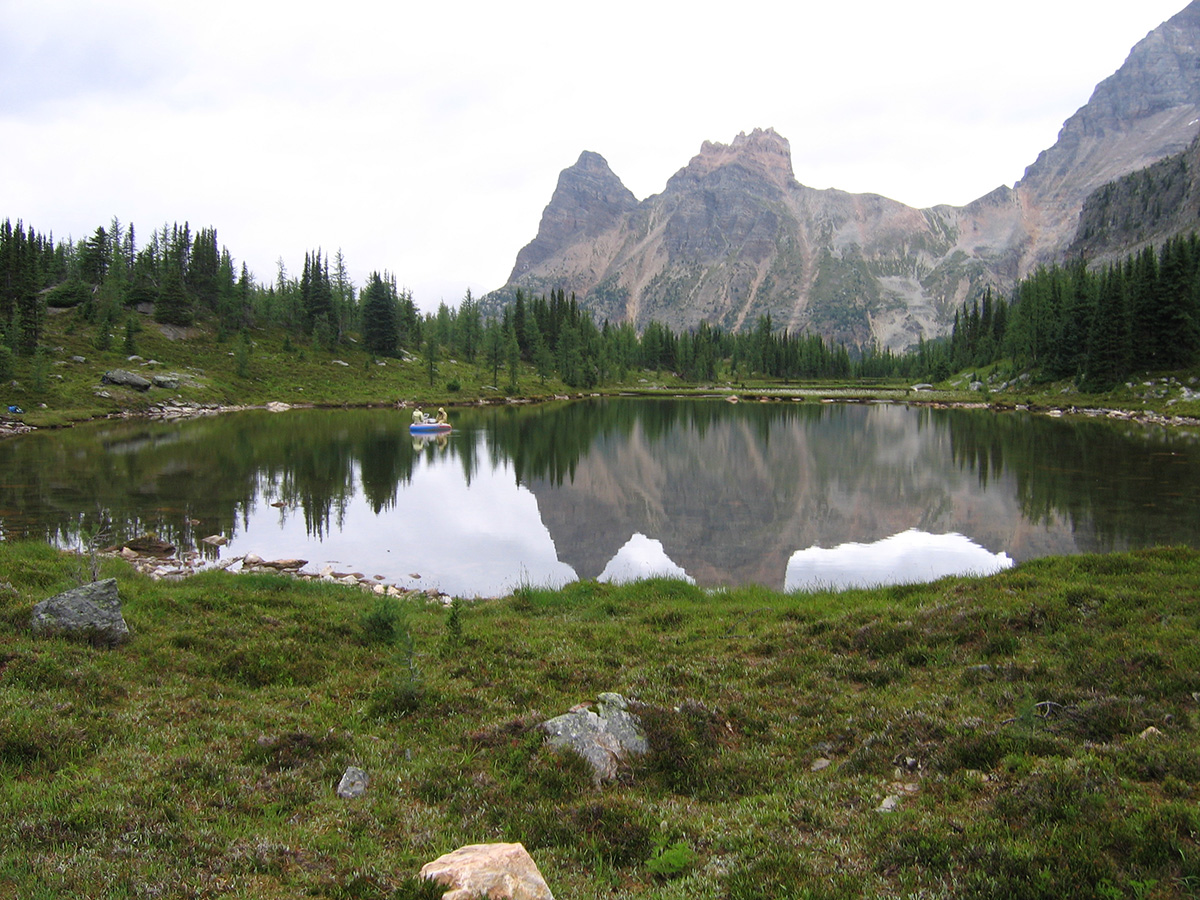
UAlberta biological sciences professor Rolf Vinebrooke's students pictured sampling the water in Hunagee Pond in Yoho National Park to study the effects of invasive sportfish and the impact of climate change.
Armed with their free park passes, Canadians are taking to the mountain parks in record numbers to celebrate Canada's sesquicentennial. Simultaneously, University of Alberta scientists are collecting a record number of samples from mountain lakes to measure their responses to climate change and past introductions of invasive sportfish.
"People always look at mountain lakes like the ultimate pristine ecosystem," said Rolf Vinebrooke, professor of biological sciences who specializes in the study of alpine lakes. "You can't tell just by looking, but what they don't know is that there are biological pollutants in these lakes that were never supposed to be there."
Vinebrooke and his team of six students are sampling 150 lakes in Waterton, Banff, Kootenay, Yoho and Jasper. They are measuring biological organisms like phytoplankton and zooplankton-so-called bioindicators-to assess the health of the whole ecosystem. To test their hypotheses, Vinebrooke and his students are looking to similar surveys conducted during the 1900s as baseline data.
"Scientists need to continue exploring how these ecosystems are being altered so as to provide insights into their resilience against global change." -Rolf Vinebrooke
In a move designed to attract tourists in the early 20th century, Environment Canada monitored mountain lakes to determine which ones they could stock with exotic sportfish such as rainbow, European brown and eastern brook trout. The consequences of these introduced non-native fish species are still being felt more than half-a-century later because they amplify the more recent effects of extreme climate events such as summer heat waves.
Irreparable damage
Vinebrooke says that the introduction of the non-native fish species has, in some cases, changed the entire ecosystem of these lakes-changes that have been exacerbated by climate change. By the time UNESCO declared Canada's mountain parks World Heritage Sites in the 1980s, the irreparable damage had already been done.
Vinebrooke explains that depending if a mountain lake is still in its natural fishless state or it has been stocked with fish, it responds very differently to climate change.
"Biological responses to higher temperatures are more striking in those lakes that still contain these exotic sportfish," he said. "However, we are certain that many of the lakes that were stocked in the last century have now returned to their naturally fishless state since the elimination of fish introductions."
Naturally fishless mountain lakes are dominated by large invertebrates. Adapted to cold water conditions, these invertebrates are slow growing and therefore take longer to respond to a warming climate. Vinebrooke says that in lakes with the exotic fish, the ecosystem changes quickly, giving rise to an explosion of smaller invertebrates that thrive in warmer temperatures with fewer predators.
Not-so-clear mountain lakes
As a further consequence, the phosphorous found in fish pee concentrates with the increased numbers of introduced fish. Pair that with warmer waters from climate change and, according to Vinebrooke, there is the potential to synergistically stimulate algal blooms and reduce the water quality of otherwise clear mountain lakes.
Vinebrooke and his students will soon be back in the lab testing their hypotheses regarding these environmental changes and how they have affected biological communities in these mountain lakes over the past century.
As for whether the introduction of these exotic sportfish had the desired effect of creating the mystique surrounding mountain lakes and driving tourism, Vinebrooke has a different perspective.
"It's more so the diversity of the landscape when you get there that is really amazing. It's the complexity of the mountains themselves in addition to the crystal clear lakes, glaciers and distinct alpine treelines. It's that panoramic spectacular atmosphere that draws people to the mountains. Canadians simply need to respect the intrinsic worth of these spaces while they are enjoying them. Along these lines, scientists need to continue exploring how these ecosystems are being altered so as to provide insights into their resilience against global change."